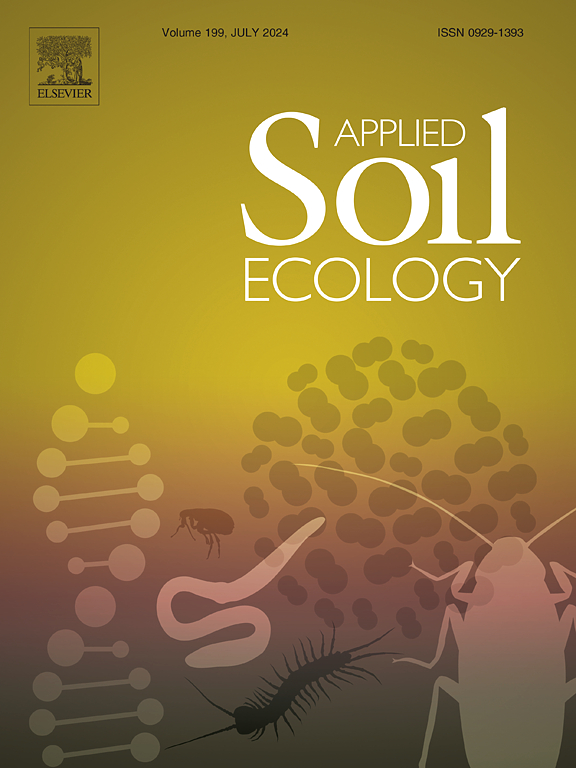Distinct assembly mechanisms of the abundant and rare bacterial taxa in plateau habitats
IF 4.8
2区 农林科学
Q1 SOIL SCIENCE
引用次数: 0
Abstract
The ecological assembly mechanisms that dominate the distribution of microbial taxa across diverse plateau habitats have been poorly understood. The current study aimed to examine the distribution patterns of the conditionally rare or abundant taxa (CRAT), conditionally rare taxa (CRT), and always rare taxa (ART) in the bacteria from distinct types of plateau habitats, including wetland, forest, and desert soils, and lake sediments, on the Qinghai-Tibetan Plateau, and to elucidate the underlying assembly mechanisms. The results revealed that the assembly of CRAT between lake sediments and soils was primarily governed by heterogeneous selection with salinity serving as the key environmental driver. The assembly process of CRT between different types of habitats was dominated by dispersal limitation, whereas there was no dominant ecological process for the assembly of ART. In addition, the topological characteristics of co-occurrence networks indicated that there was a closer and more complex bacterial interaction in the forest soils than in the other habitats. Furthermore, the presence of CRT and the interactions among different bacterial taxa appeared to be key drivers in the organization and dynamics of the bacterial taxa within co-occurrence networks. Collectively, these results provide important insights on the ecological assembly mechanisms and microbial associations across diverse plateau habitats.

求助全文
约1分钟内获得全文
求助全文
来源期刊

Applied Soil Ecology
农林科学-土壤科学
CiteScore
9.70
自引率
4.20%
发文量
363
审稿时长
5.3 months
期刊介绍:
Applied Soil Ecology addresses the role of soil organisms and their interactions in relation to: sustainability and productivity, nutrient cycling and other soil processes, the maintenance of soil functions, the impact of human activities on soil ecosystems and bio(techno)logical control of soil-inhabiting pests, diseases and weeds.
 求助内容:
求助内容: 应助结果提醒方式:
应助结果提醒方式:


